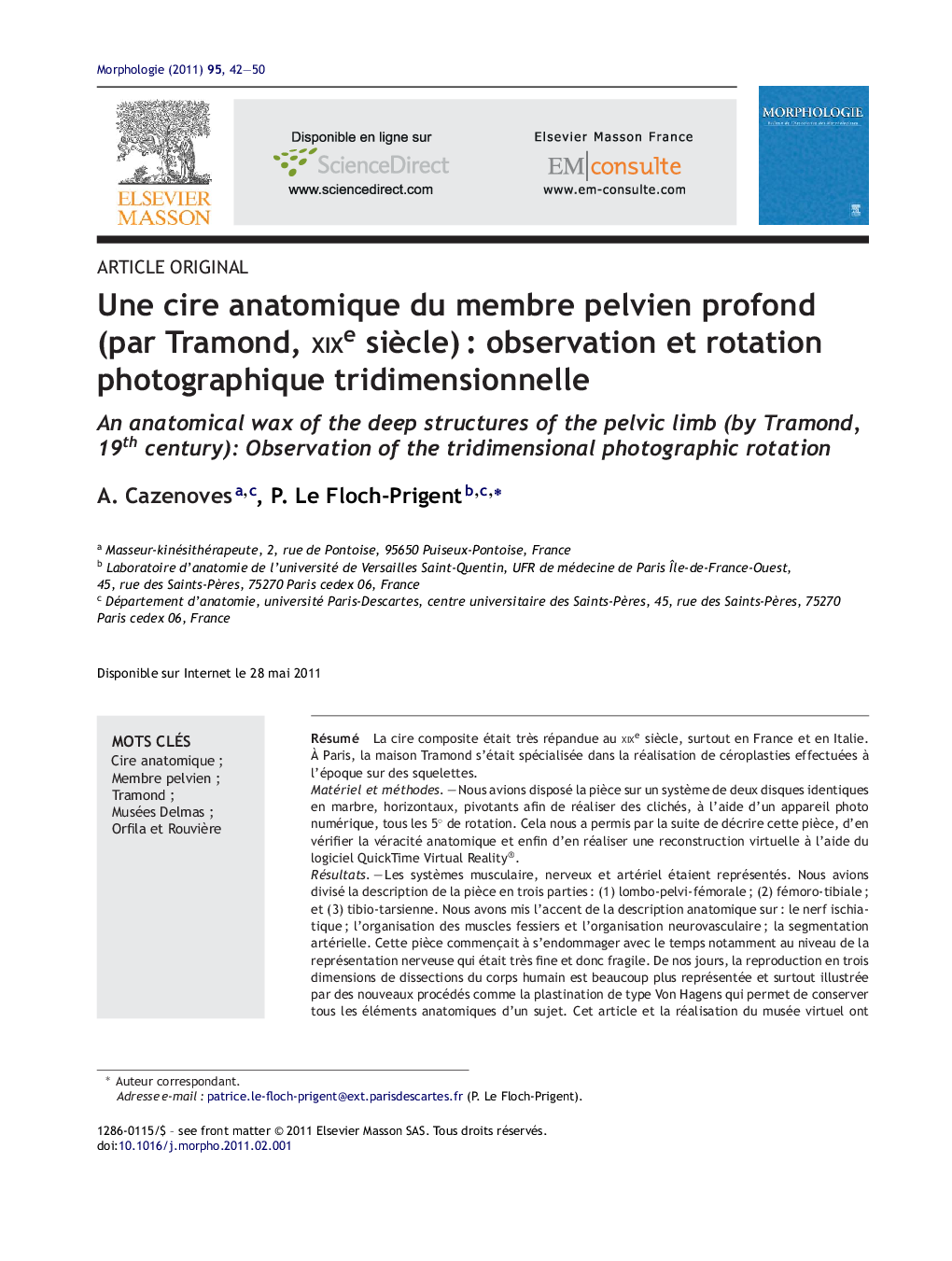| Article ID | Journal | Published Year | Pages | File Type |
|---|---|---|---|---|
| 2059928 | Morphologie | 2011 | 9 Pages |
Abstract
The muscular, nervous and arterial elements were represented. We divided the description in three parts: (1) lumbar, pelvic and femoral; (2) femoro-tibial; and (3) tibio-tarsian. We focused the anatomical description on the sciatic nerve; on the organization of the muscles of the gluteal region and the neurovascular organization; and on arterial segmentation. This sample was getting damaged with time, noticeably the representation of the nerves, which are very thin and so, very fragile. Nowadays, 3D representation of the dissected human body is more common, with new techniques such as plastination (Von Hagen's type), which allows one to preserve all the anatomical elements of the subject. This paper and the realization of the virtual museum also aim to participate in a work memory, which recognize the knowledge of the anatomist of wax makers, their teaching quality remained unequalled as their obvious artistical value.
Related Topics
Life Sciences
Biochemistry, Genetics and Molecular Biology
Biochemistry, Genetics and Molecular Biology (General)
Authors
A. Cazenoves, P. Le Floch-Prigent,
